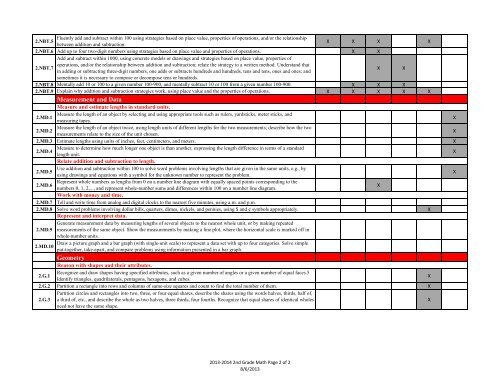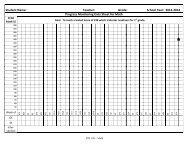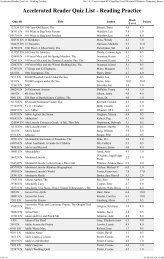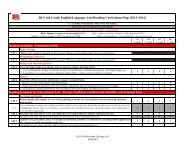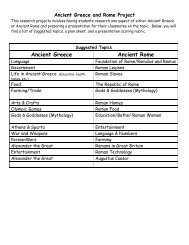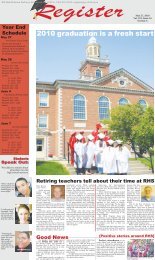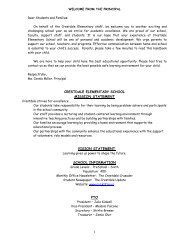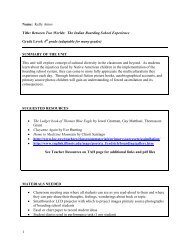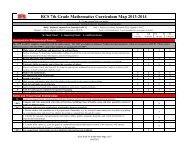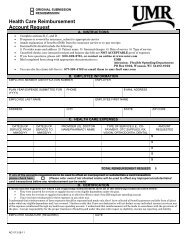2013-2014 Math Grade 2.pdf
2013-2014 Math Grade 2.pdf
2013-2014 Math Grade 2.pdf
Create successful ePaper yourself
Turn your PDF publications into a flip-book with our unique Google optimized e-Paper software.
Fluently add and subtract within 100 using strategies based on place value, properties of operations, and/or the relationship2.NBT.5between addition and subtraction.X X X X2.NBT.6 Add up to four two-digit numbers using strategies based on place value and properties of operations. X XAdd and subtract within 1000, using concrete models or drawings and strategies based on place value, properties of2.NBT.7operations, and/or the relationship between addition and subtraction; relate the strategy to a written method. Understand thatin adding or subtracting three-digit numbers, one adds or subtracts hundreds and hundreds, tens and tens, ones and ones; andX Xsometimes it is necessary to compose or decompose tens or hundreds.2.NBT.8 Mentally add 10 or 100 to a given number 100-900, and mentally subtract 10 or 100 from a given number 100-900. X X X2.NBT.9 Explain why addition and subtraction strategies work, using place value and the properties of operations. X X X X XMeasurement and DataMeasure and estimate lengths in standard units.2.MD.1Measure the length of an object by selecting and using appropriate tools such as rulers, yardsticks, meter sticks, andmeasuring tapes.X2.MD.2Measure the length of an object twice, using length units of different lengths for the two measurements; describe how the twomeasurements relate to the size of the unit chosen.X2.MD.3 Estimate lengths using units of inches, feet, centimeters, and meters. X2.MD.4Measure to determine how much longer one object is than another, expressing the length difference in terms of a standardlength unit.XRelate addition and subtraction to length.2.MD.5Use addition and subtraction within 100 to solve word problems involving lengths that are given in the same units, e.g., byusing drawings and equations with a symbol for the unknown number to represent the problem.X2.MD.6Represent whole numbers as lengths from 0 on a number line diagram with equally spaced points corresponding to thenumbers 0, 1, 2,..., and represent whole-number sums and differences within 100 on a number line diagram.XWork with money and time.2.MD.7 Tell and write time from analog and digital clocks to the nearest five minutes, using a.m. and p.m.2.MD.8 Solve word problems involving dollar bills, quarters, dimes, nickels, and pennies, using $ and ¢ symbols appropriately. XRepresent and interpret data.2.MD.9Generate measurement data by measuring lengths of several objects to the nearest whole unit, or by making repeatedmeasurements of the same object. Show the measurements by making a line plot, where the horizontal scale is marked off inwhole-number units.Draw a picture graph and a bar graph (with single-unit scale) to represent a data set with up to four categories. Solve simple2.MD.10put-together, take-apart, and compare problems using information presented in a bar graph.GeometryReason with shapes and their attributes.2.G.1Recognize and draw shapes having specified attributes, such as a given number of angles or a given number of equal faces.5Identify triangles, quadrilaterals, pentagons, hexagons, and cubes.X2.G.2 Partition a rectangle into rows and columns of same-size squares and count to find the total number of them. X2.G.3Partition circles and rectangles into two, three, or four equal shares, describe the shares using the words halves, thirds, half of,a third of, etc., and describe the whole as two halves, three thirds, four fourths. Recognize that equal shares of identical wholesneed not have the same shape.X<strong>2013</strong>-<strong>2014</strong> 2nd <strong>Grade</strong> <strong>Math</strong> Page 2 of 28/6/<strong>2013</strong>


